In Human Evolution this week, we discussed how animals with different diets will have coinciding differences in their teeth morphology as well as in other cranial areas, such as the zygomatic and mandible. Similar dietary morphology patterns are observed in hominins as well, which can tell us a lot about both the environment they were living in and the types of food they were eating. Though it is not entirely conclusive, such investigations can help paint a broad picture of how these early ancestors of ours may have lived.
To better understand these ideas, we took to the lab! Using a variety of tools and substrates, we emulated the different chewing mechanisms and diets of hominins. The tools served as models for the types of teeth, while the size differences helped emphasize the varying amount of force needed to process distinct food types. The tools each group used were pliers, scissors, mortar and pestles, and meat tenderizers; there were two sizes for each tool, the smaller size imposing a force limitation. Each group had a different substrate: collard greens, tomatoes, carrots, nuts, ginger, and potatoes. These were used to represent the types of food animals in the wild may eat, ranging from soft and fleshy, to tough and fibrous, and to a harder exterior (as in a nut-shell).
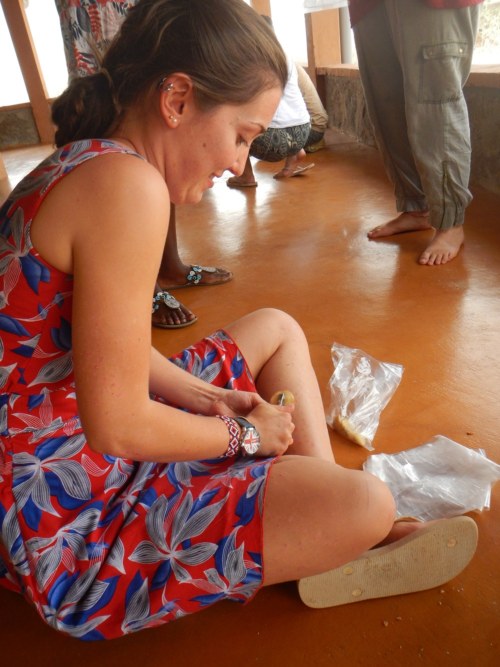
Millie tries out a pair of pliers on her potatoes!
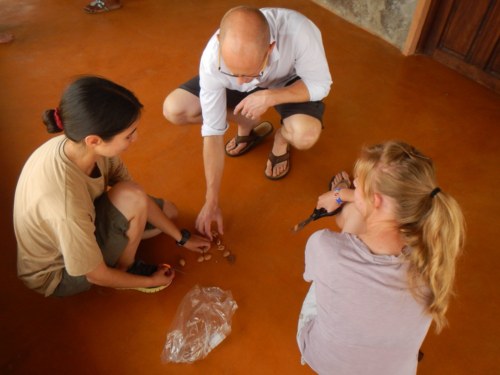
Carla and Natalie struggle to cut open nuts with scissors.
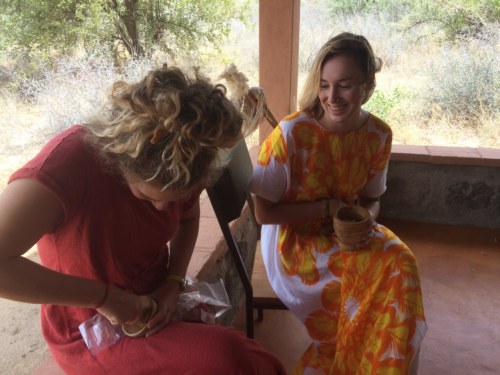
Kathryn and Danielle are having a blast trying to mash ginger in the mortar and pestle!
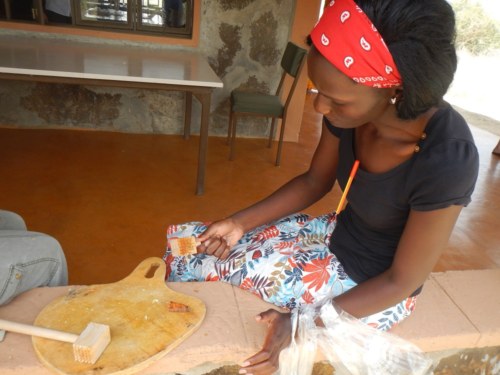
Esther examines her carrot after hitting it with the meat tenderizer with a small handle (to simulate less force).
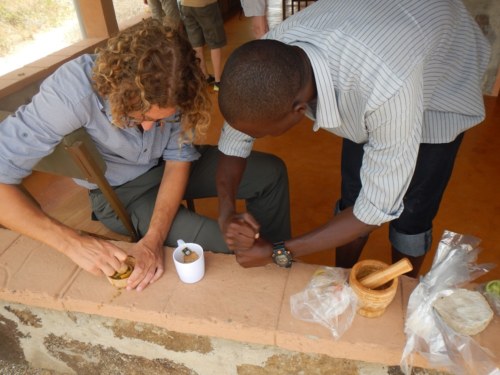
Tobias gives advice to Jon as the tomato evades his attempt to crush it with the mortar and pestle.
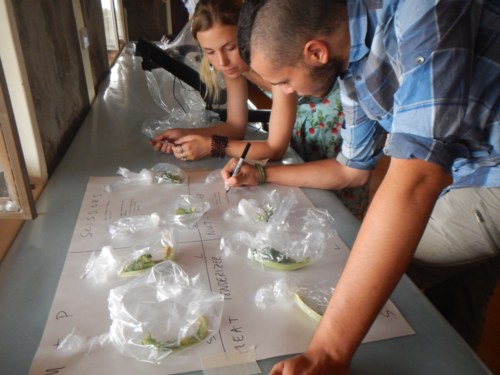
Max and Emily label their poster according to tool success.
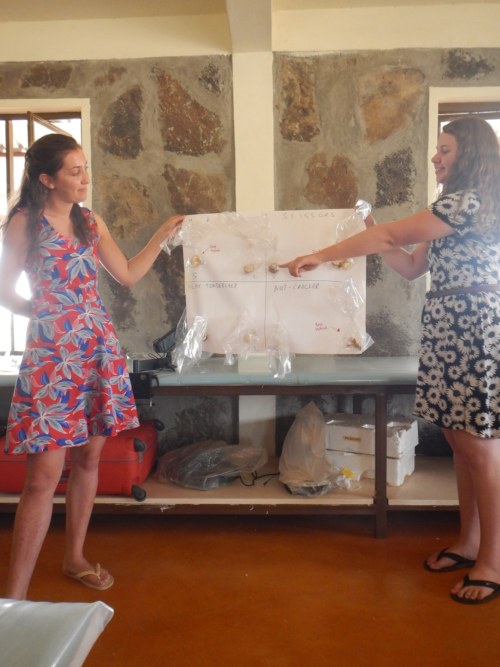
Yvette discusses how the small scissors were only partially effective on the potatoes.
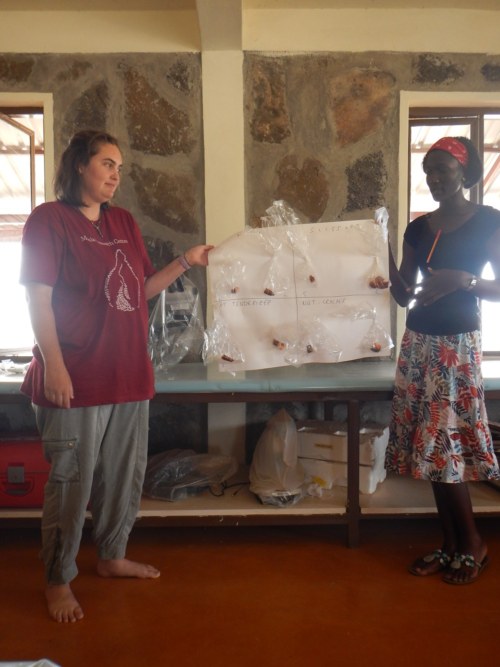
Esther and Morgan explain how their carrots fared against the different tools.
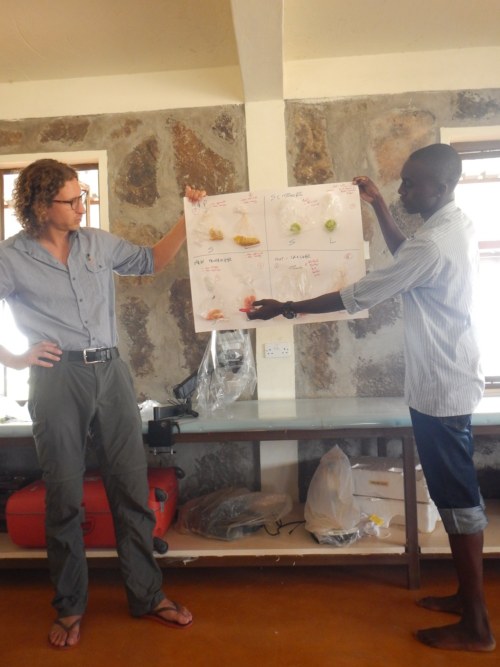
Tobias was surprised at how ineffective the meat tenderizer was on his tomatoes.
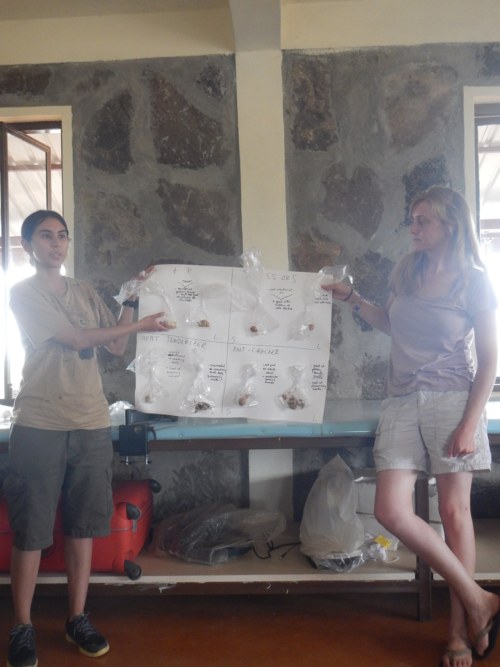
Carla and Natalie both found the mortar and pestle to be ineffective at breaking up the nuts.
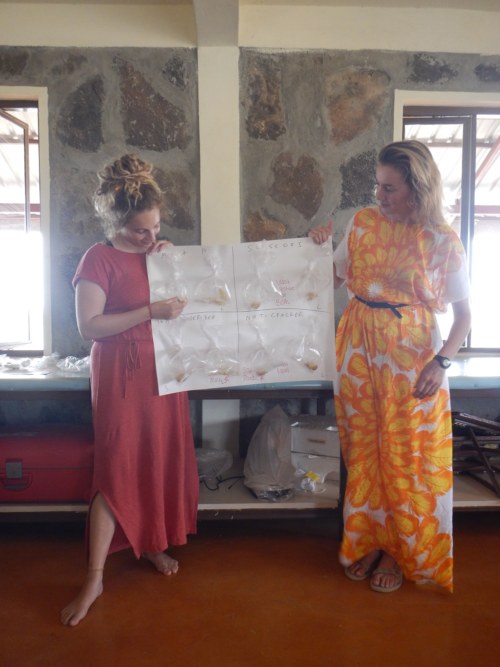
Kathryn and Danielle determined that the pliers were most effective at reducing the ginger to a more digestible state.
The next day we took to the field again to visit Area 13, home to a few localities where the hominin hunters of TBI had worked several years ago. We visited two of their hominin sites: at one, they found a tooth, and at the other, a calcaneus. After extensive excavations, a humerus was uncovered that they believe is associated with the calcaneus!
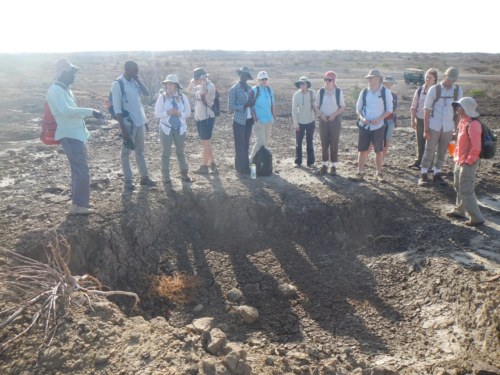
Sale explains the discovery and excavation process.
As the two sites are about a kilometer apart, rather than simply walking to the second site, Dr. Skinner had us prospect for hominin fossils along the way. Maximizing efficiency is paramount to success in the field!
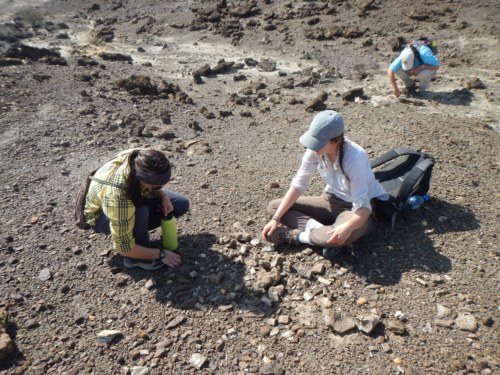
Jayde and Millie examine this group of fossils.
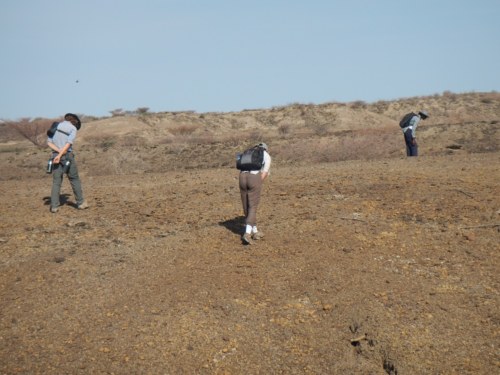
Millie, Jon, and Esther prospect on their way to the second excavation site.
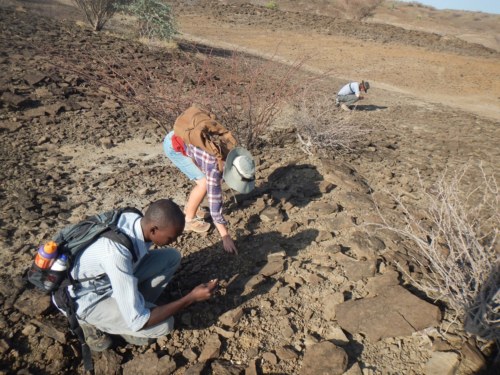
Tobias, Emily, and Jon comb through the sediments as they look for fossils.
At the second site, Sale and Apolo described how they found the hominin calcaneus and the excavations that took place afterwards. The team spent several months working at this site, and the time and effort they put in is apparent! The first round of excavations alone is quite large, but the succeeding trench is truly massive. Fortunately, their tremendous effort was rewarded when they found a hominin humerus!
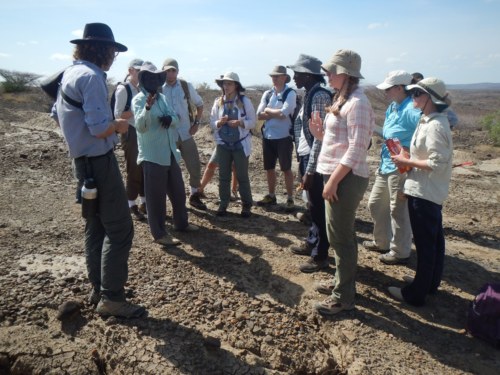
Sale tells the group how after finding the calcaneus, they decided to excavate the area and found a humerus!
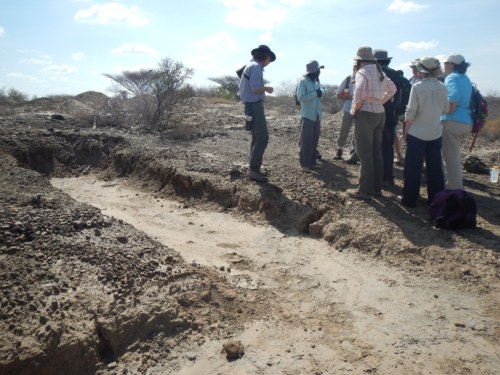
The excavation site where the hominin hunters first discovered the calcaneus.
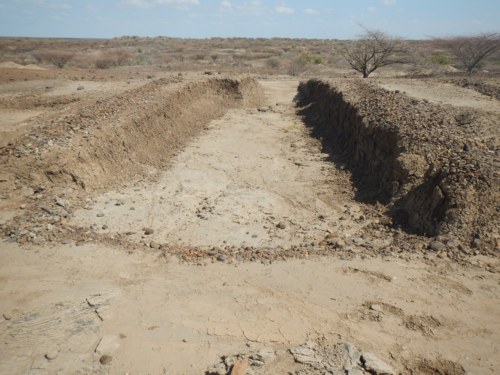
This trench is enormous!
We spent the remainder of our morning prospecting for any hominin fossils that may have been missed in the previous excavations.
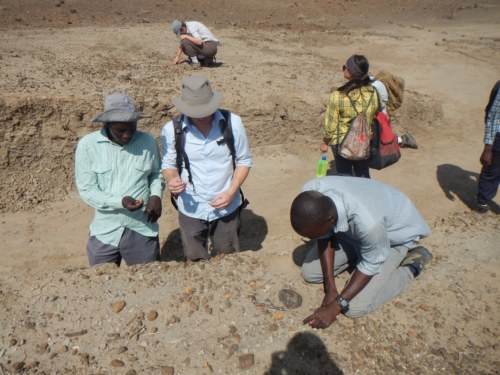
Dr. Skinner and Sale discuss the trench as the students examine the area.
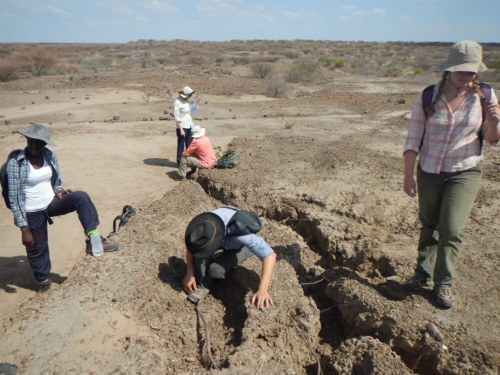
Jon searches these fissures for fossils.
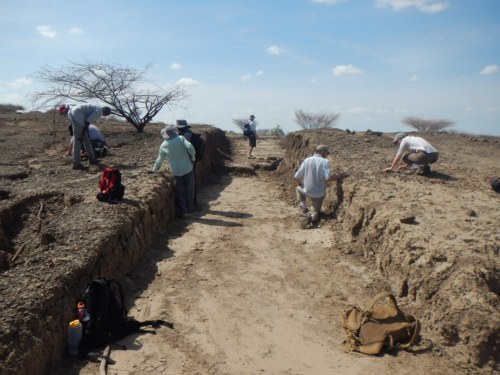
The length of this trench is made apparent by how far away Dr. Skinner is; where he stands is about three-quarters of the distance to the end of the trench.
As fate would have it, in our last ten minutes one of the students found a small fragment of what we believed to be a primate. The students gathered around to examine the find, and, serendipitously, Esther stumbled upon a primate talus (a bone in the foot that articulates with the tibia and calcaneus). After inspection, we realized that the initial fragment was actually a piece of the talus, probably from the opposite leg! Though we unfortunately had to depart, we decided to return to this site on our next field day to continue searching for the missing pieces of this ancient primate!
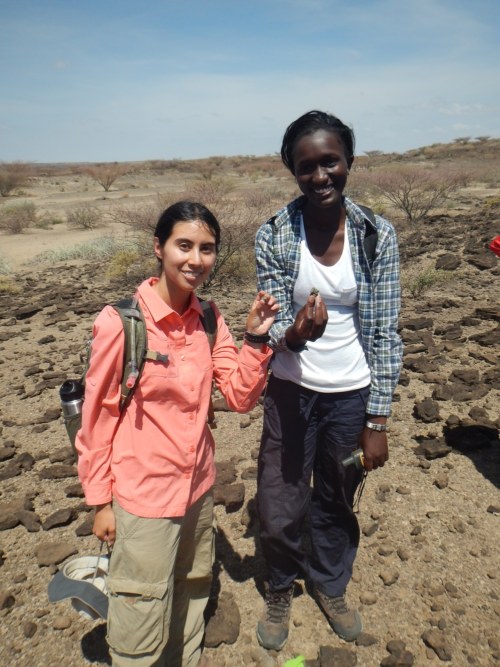
Carla and Esther pose with their pair of talus’s!
Stay tuned for the upcoming blog to find out the results of our extended investigation!





